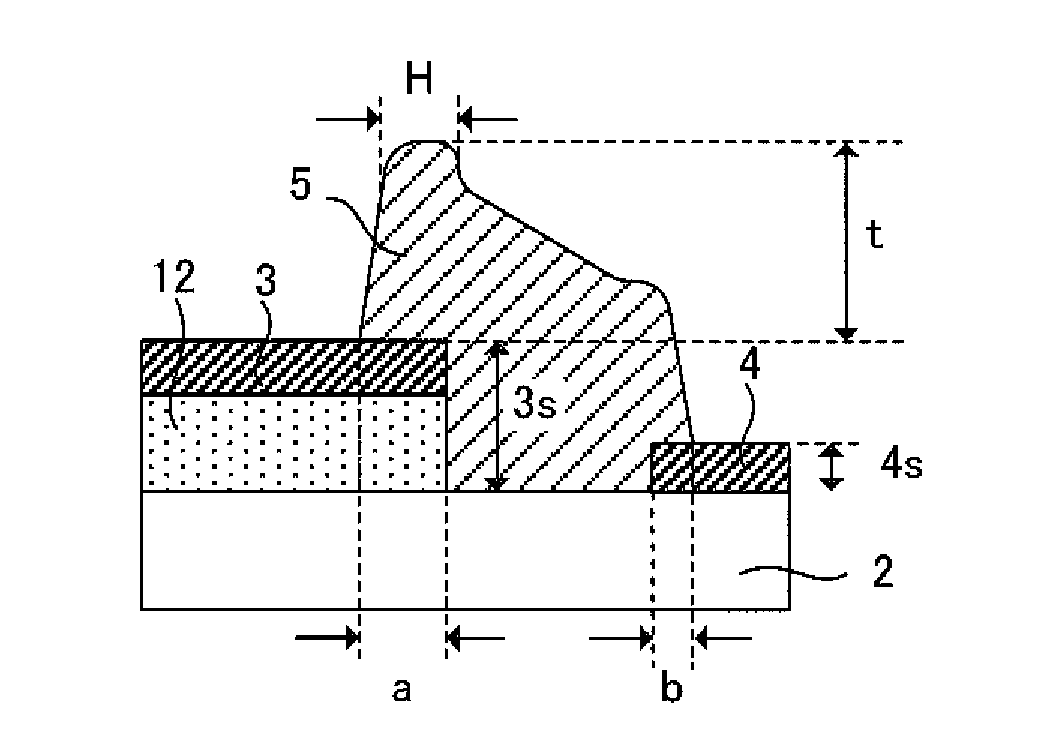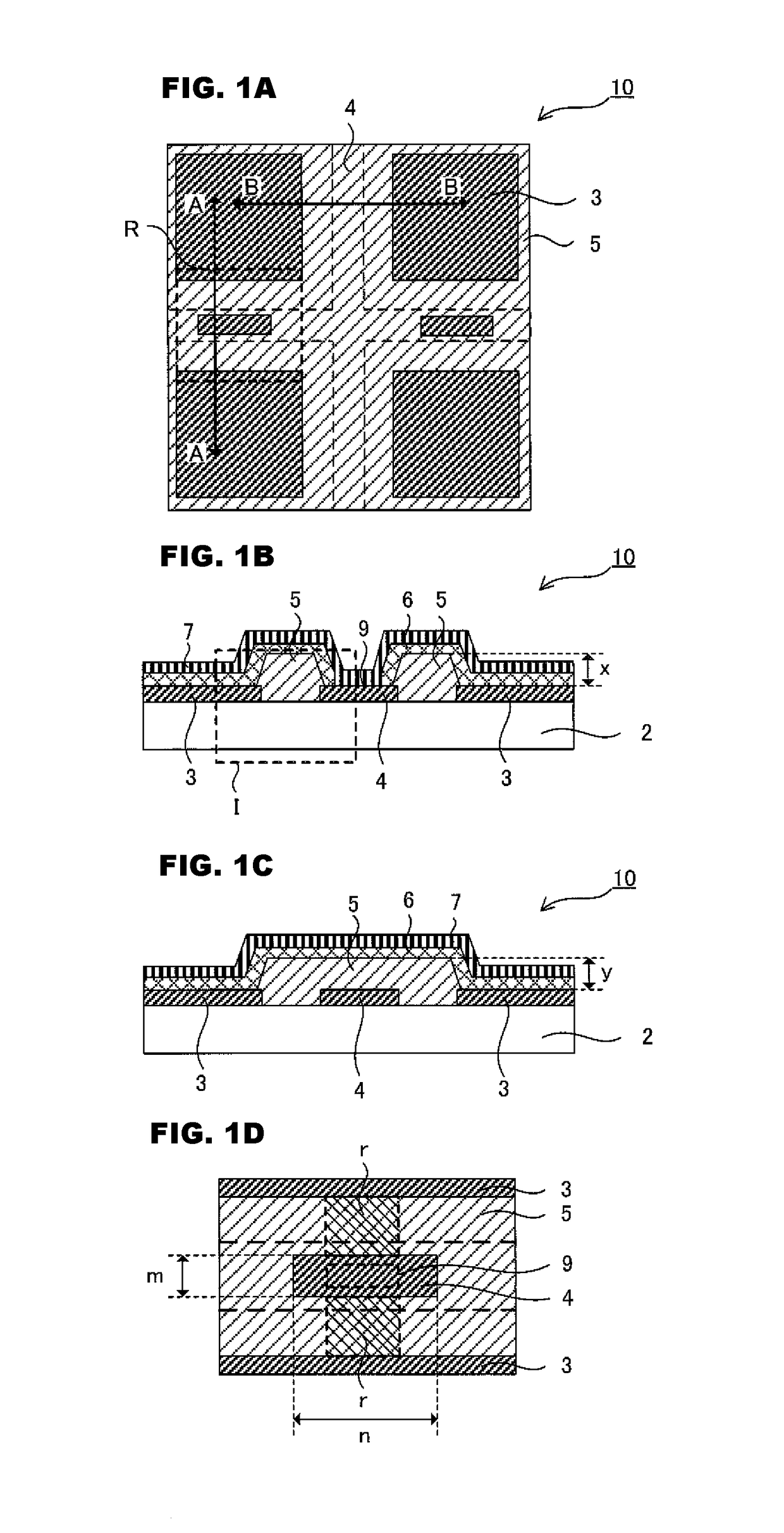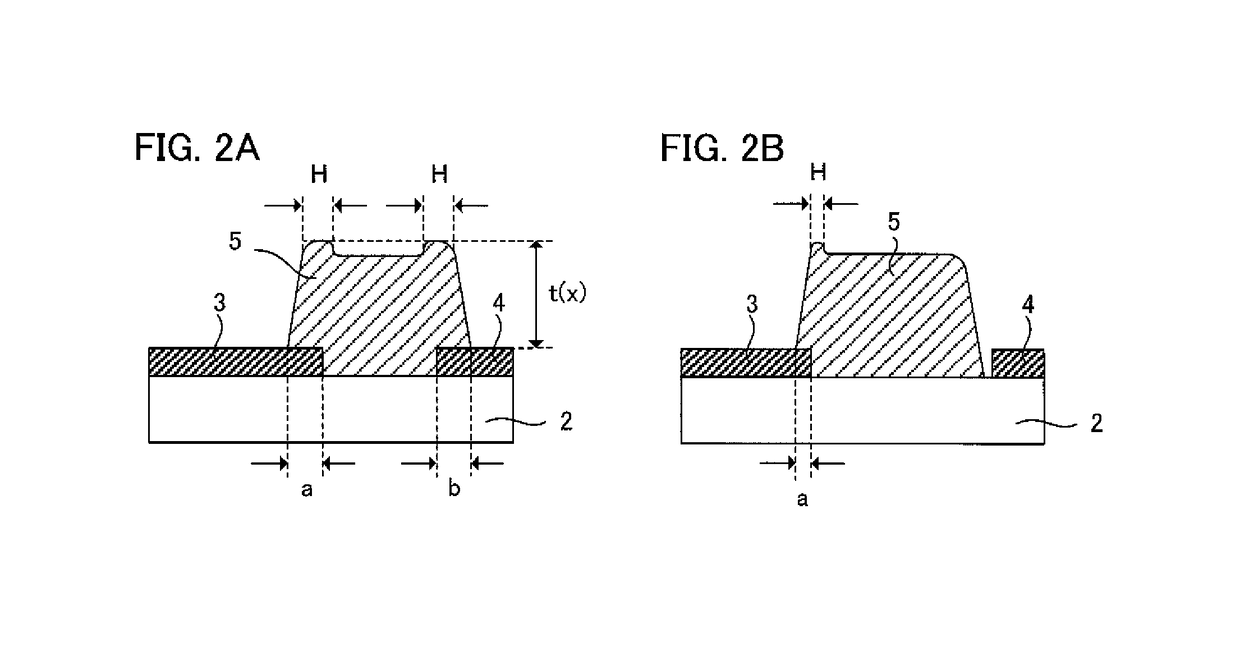Top-emission organic electroluminescence display device and production method therefor
a display device and organic technology, applied in the direction of organic semiconductor devices, semiconductor devices, electrical devices, etc., can solve the problems of limited aperture ratio, uniform brightness, deterioration of light-emitting efficiency, etc., and achieve the effect of suppressing the deterioration of display characteristics
- Summary
- Abstract
- Description
- Claims
- Application Information
AI Technical Summary
Benefits of technology
Problems solved by technology
Method used
Image
Examples
example 1
[0195](Pixel Electrode / Auxiliary Electrode Forming Process)
[0196]A chromium film having a thickness of 150 nm is formed on a substrate comprising an alkali-free glass having a thickness of 0.7 mm by a sputtering method. After that, pixel electrodes and auxiliary electrodes are simultaneously formed by a photolithography method.
[0197](Insulating Layer Forming Process)
[0198]Next, an insulating layer is formed between the pixel electrodes to cover edge portions of, the adjacent pixel electrodes and to include openings exposing the auxiliary electrodes by a photolithography method. Incidentally, the longitudinal cross-sectional shape of the insulating layer is a forward tapered shape. In addition, when an overlap distance of the insulating layer between the contact portion and the pixel electrode adjacent to the contact portion with respect to the pixel electrode is regarded as “a” and an overlap distance of the insulating layer between the contact portion and the pixel electrode adjace...
example 2
[0217]When the height of the insulating layer between the contact portion and the pixel electrode adjacent to the contact portion is regarded as “x” and the maximum height of the heights of the insulating layers other than the insulating layer between the contact portion and the pixel electrode adjacent to the contact portion is regarded as “y”, the organic EL display device is produced by the same method as that of Example 1 except that y−x is designed as listed in the following Table 3.
[0218]
TABLE 3y-xNo.(μm)50.260.170.0580.01
[0219](Evaluation)
[0220]The insulating layers are designed as Nos. 5 to 8 listed in Table 3, the space between the cover member and the organic EL layer side substrate is set to be in a reduced pressure state to adhere the organic EL layer side substrate and the cover member, and after that, the organic layers formed on the auxiliary electrodes are removed by the laser beam through the cover member. At this time, existence of the scattering of the organic lay...
example 3
[0224]The organic EL display device is produced by setting the same as Example 1 except that the organic EL layer forming process is performed as illustrated below.
[0225](Organic EL Layer Forming Process)
[0226]Next, a hole injecting layer and a hole transporting layer are formed on the pixel electrode so as to have a thickness of 0.1 μm and, after that, a light-emitting layer having 0.02 μm is formed on the hole transporting layer. After that, an electron transporting layer having a thickness of 0.03 μm is formed on the light-emitting layer, so that an organic EL layer is obtained. Incidentally, the organic EL layer is formed on the pixel electrode and is formed on the auxiliary electrode exposed from the opening of the insulating layer.
[0227](Evaluation)
[0228]The same result as that of Example 1 is obtained.
PUM
 Login to View More
Login to View More Abstract
Description
Claims
Application Information
 Login to View More
Login to View More - R&D
- Intellectual Property
- Life Sciences
- Materials
- Tech Scout
- Unparalleled Data Quality
- Higher Quality Content
- 60% Fewer Hallucinations
Browse by: Latest US Patents, China's latest patents, Technical Efficacy Thesaurus, Application Domain, Technology Topic, Popular Technical Reports.
© 2025 PatSnap. All rights reserved.Legal|Privacy policy|Modern Slavery Act Transparency Statement|Sitemap|About US| Contact US: help@patsnap.com



